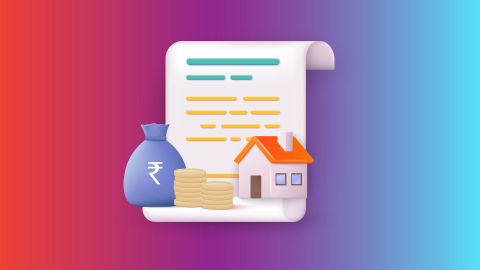What is the repo rate?
The repo rate is the interest rate at which the RBI lends money to commercial banks. When banks need cash to meet their short-term needs, they borrow from the RBI at this rate. It is a fundamental part of the country’s monetary policy.Why does the repo rate increase?
The RBI increases the repo rate to control inflation. When inflation rises, the cost of goods and services becomes higher. To bring prices under control, the RBI hikes the repo rate. This makes borrowing costlier, reducing the money supply in the economy.Now, let us understand the ripple effects of this move.
1. Loans become costlier
When the repo rate increases, banks pass on the higher cost of borrowing to their customers. This means higher interest rates for loans like home loans, car loans, and personal loans.For instance, if you are planning to buy a house with a home loan, the monthly EMIs may increase. However, you can still make your dream of owning a home come true by planning smartly. A home loan EMI calculator can help you determine how much you need to budget for the rate changes.
2. Savings become more rewarding
An increase in the repo rate often leads to higher interest rates on fixed deposits and savings accounts. This is good news for savers as they earn more on their deposits.If you are someone who prefers saving overspending, this is the time to park your money in fixed deposits for better returns.
3. Reduced spending power
When loans become expensive, people tend to borrow less. With higher EMIs, disposable income shrinks. This reduces spending on non-essential items, slowing down consumer demand.For businesses, lower demand can mean reduced profits, which might lead to cost-cutting measures, including layoffs.
4. Impact on inflation
The primary goal of a repo rate hike is to control inflation. With less money circulating in the economy, demand decreases, leading to a gradual reduction in prices.While this might sound like a win, it is a balancing act. If demand drops too much, it can slow down economic growth.
5. Stock market reactions
The stock market often reacts negatively to an increase in the repo rate. Higher borrowing costs for businesses can affect their profitability, making investors cautious.On the flip side, sectors like banking and financial services might benefit due to higher lending rates.
6. Currency value and foreign investments
An increased repo rate can make the Indian Rupee stronger. This is because foreign investors might find Indian bonds more attractive due to higher returns, leading to an inflow of foreign currency.However, a strong rupee can also affect exporters, as Indian goods become costlier in global markets.
7. Real estate sector feels the pinch
The real estate sector is particularly sensitive to changes in the repo rate. When home loans become expensive, people delay their property purchases. This can lead to a slowdown in housing demand.Additional Read: know more about repo rate vs reverse repo rate
How to manage your finances when repo rates rise
A repo rate hike can seem overwhelming, but smart financial planning can help:1. Assess your loan options: If you are looking for a home loan, compare lenders and check for low interest rates.
2. Refinance wisely: If you already have a loan, explore refinancing options or switch to a lender offering better terms.
3. Prioritise saving: Take advantage of higher interest rates on savings accounts and fixed deposits to grow your wealth.
4. Cut back on non-essential spending: Adjust your monthly budget to accommodate increased EMIs.
Explore Bajaj Housing Finance Home Loan
While an increase in the repo rate can make loans more expensive, it does not mean that your dream of owning a home is out of reach. With smart planning, you can still take advantage of home loan options that suit your financial situation.Bajaj Housing Finance Home Loan offers affordable interest rates, and flexible repayment plans tailored to your needs. Whether you are looking for a new home or want to refinance your existing loan, Bajaj Housing Finance helps you navigate the changes in the financial landscape.
Here are a few reasons to opt for a Bajaj Housing Finance Home Loan:
1. High loan amount: Secure funding up to Rs. 15 crore* to turn your dream home into reality.
2. Low interest rates: Enjoy interest rates starting 8.25%* p.a, and EMIs as low as Rs. 741/lakh*.
3. Quick approval: Get approved within 48 Hours* of applying – sometimes even sooner.
4. Flexible repayment tenure: Choose a repayment term of up to 32 years for comfortable EMIs.
5. Simple application: Take advantage of doorstep document collection for a smooth process.
6. Balance transfer facility: Move your existing home loan and get a top-up loan with better terms.
Apply for a Bajaj Housing Finance Home Loan today and take the first step toward your new home.




